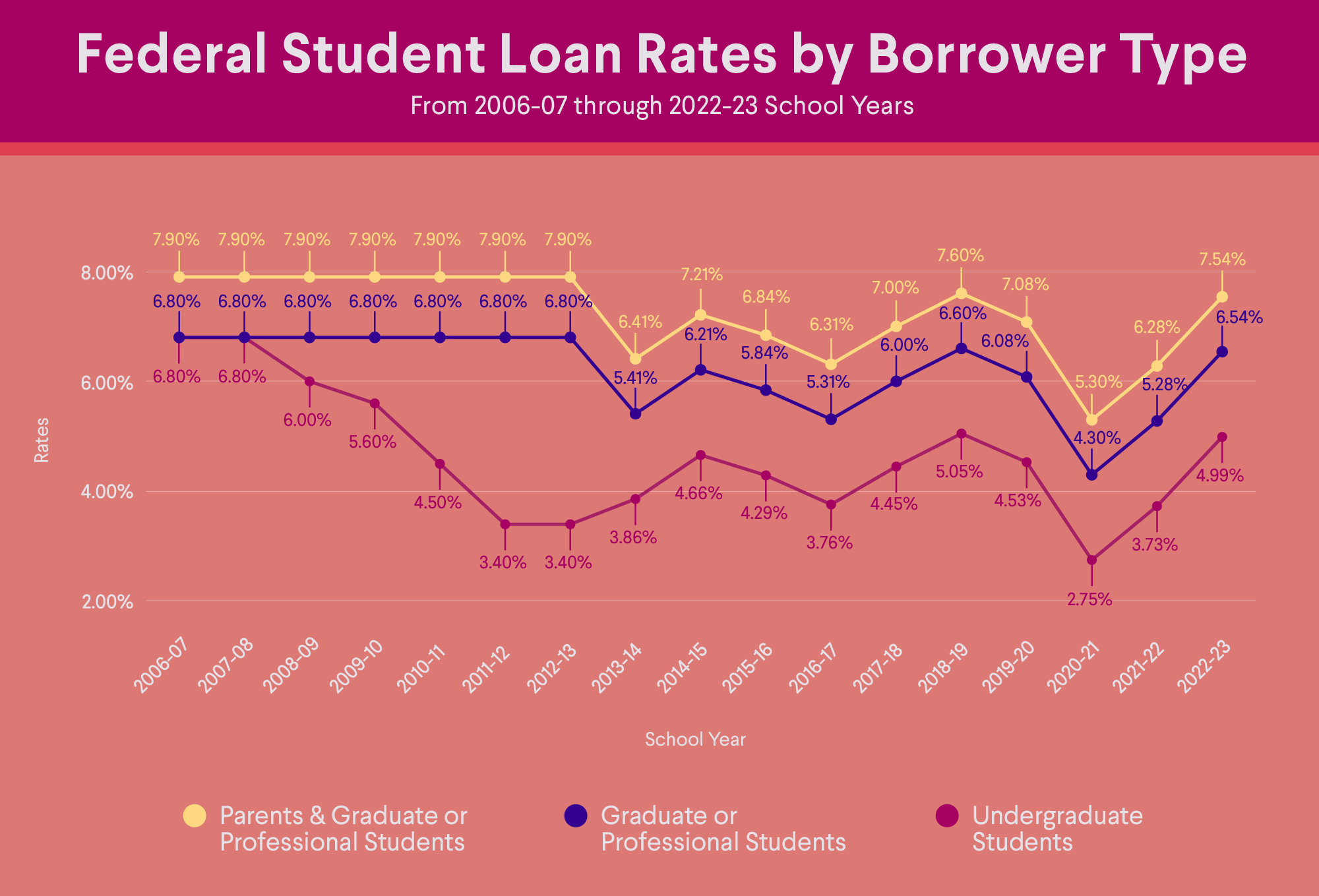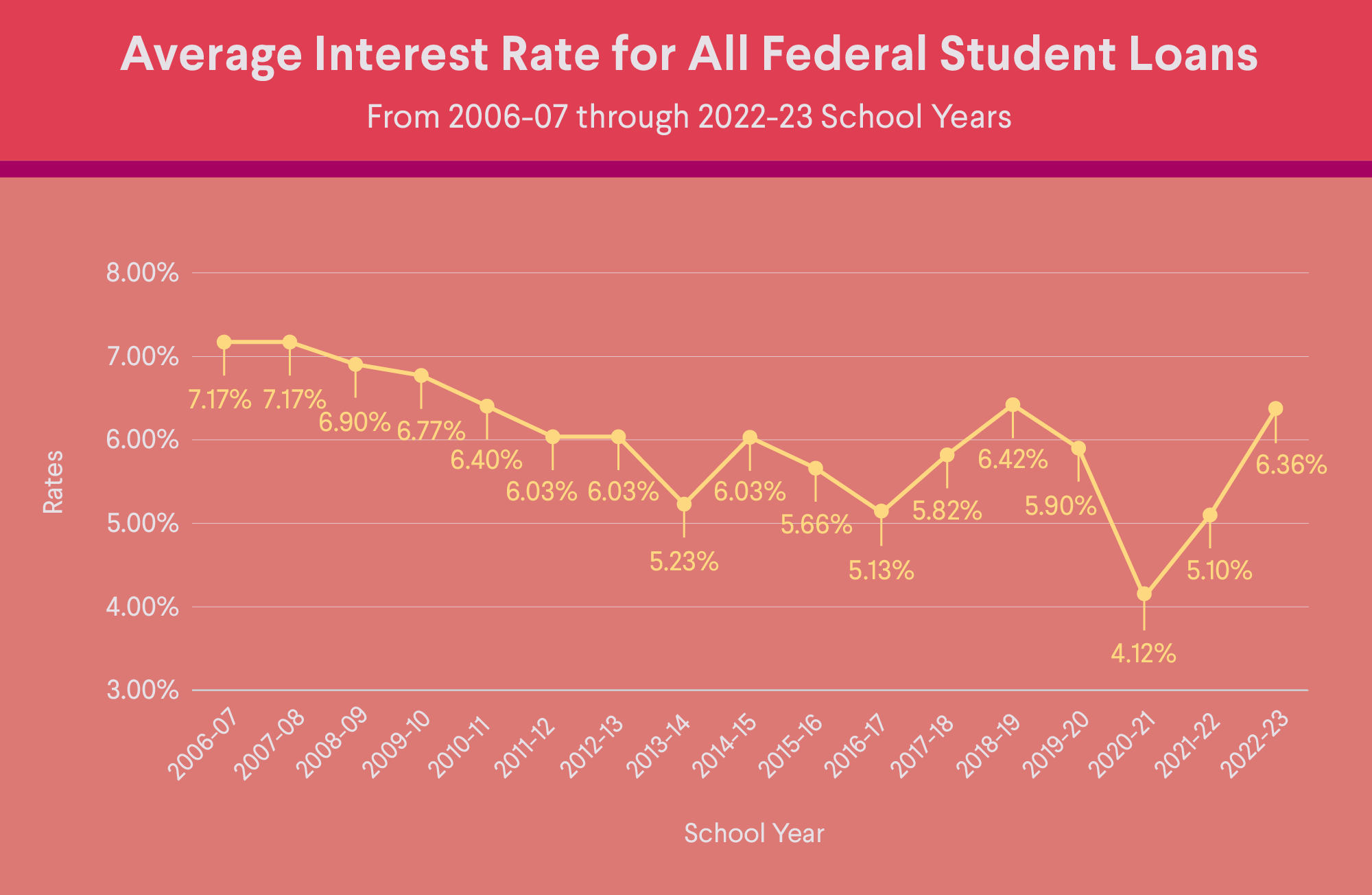How to Get Out of Student Loan Debt: 6 Options
Dealing with substantial student loan debt can be overwhelming, especially if you find yourself struggling to make your payments.
Fortunately, there are some options that may help minimize the amount of money you pay back on your federal student loans, such as the Income-Driven Repayment (IDR) and Public Service Loan Forgiveness (PSLF) programs.
When trying to figure out how to get rid of student loans, it’s important to understand that you might be able to reduce your monthly payment with a student loan refinance. Or you may be able to temporarily postpone your federal loan payments through deferment or forbearance.
Table of Contents
Options to Get Out of Repaying Student Loans Legally
1. Loan Forgiveness Programs
Depending on your eligibility, there are a few different federal loan forgiveness programs available to borrowers with federal student loans. These programs could help you get out of paying a portion of student loan debt as they forgive your loan balance after a certain number of years.
President Joe Biden proposed a federal student loan debt cancellation of up to $20,000 for those who met household income eligibility. However, the Supreme Court ruled against Biden’s plan, saying the president did not have the necessary authority to take such action. Since then, President Biden has announced various programs to provide relief for those carrying federal loans, along with calling attention to existing plans.
Each forgiveness program has different eligibility criteria.
Teacher Loan Forgiveness
This federal student loan forgiveness program forgives the loans of highly qualified teachers. Depending on the subject area they teach, teachers who meet the eligibility requirements may have up to $17,500 or up to $5,000. Teachers are eligible to apply for this loan forgiveness program after they have completed five years of service.
Recommended: Explaining Student Loan Forgiveness for Teachers
Public Service Loan Forgiveness
This program is designed for those working in public service. In order to qualify, applicants must meet the programs eligibility requirements, including:
• Work for a qualified employer
• Work full-time
• Hold Direct Loans or have a Direct Consolidation Loan
• Make 120 qualifying payments on an income-driven repayment plan
Borrowers who are interested in pursuing PSLF will have to follow strict requirements in order to qualify and have their loan balances forgiven.
Take control of your student loans.
Ditch student loan debt for good.
2. Income-Driven Repayment Plans
Income-driven repayment plans for federal student loans tie a borrower’s monthly loan payments to their income and family size.
The repayment period for income-driven repayment plans varies from 20 to 25 years. While these plans help make loan payments more affordable for borrowers, extending the loan terms may result in accruing more interest over the life of the loan.
President Biden has announced the creation of the Saving on a Valuable Education (SAVE) Plan , which replaces the existing Revised Pay As You Earn (REPAYE) Plan. Borrowers on the REPAYE Plan will automatically get the benefits of the new SAVE Plan.
The SAVE Plan, like other income-driven repayment (IDR) plans, calculates your monthly payment amount based on your income and family size. According to the White House, the SAVE Plan provides the lowest monthly payments of any IDR plan available to nearly all student borrowers.
Starting next summer, borrowers on the SAVE Plan will have their payments on federal undergraduate loans cut in half (reduced from 10% to 5% of income above 225% of the poverty line).
A beta version of the updated IDR application was made available in early August 2023 and includes the option to enroll in the new SAVE Plan. The DOE says that if you apply for an IDR plan (such as the SAVE Plan) in the summer of 2023, your application will be processed in time for your first federal student loan payment due date.
Recommended: The SAVE Plan: What Student Loan Borrowers Need to Know About the New Repayment Plan
3. Disability Discharge
When working out how to get rid of student loans, take into account that It may be possible to have federal student loans discharged if you have a permanent disability. To be eligible for the disability discharge, you need to show the Department of Education that you are not able to earn an income now or in the future because of your disability.
To do so, you need to get an evaluation from a doctor, submit evidence from Veterans Affairs, or show that you are receiving Social Security Disability Insurance. You cannot apply for disability discharge until you have been disabled for 60 months unless a doctor writes a letter saying that your disability and inability to work will last at least 60 months.
4. Temporary Relief: Deferment or Forbearance
Federal student loan repayment was put on pause over three years ago due to the Covid-19 shutdown. As part of the agreement reached in the Debt Ceiling bill, the Department of Education’s student loan forbearance program ends in 2023, with interest resuming on September 1, 2023 and payments due beginning in October 2023.
However, in late June, President Biden announced the creation of the On-Ramp Program . The Department of Education is instituting a 12-month “on-ramp” to repayment of federal student loans, running from October 1, 2023 to September 30, 2024, so that “financially vulnerable borrowers” who miss monthly payments during this period are not considered delinquent, reported to credit bureaus, placed in default, or referred to debt collection agencies.
Apart from the On-Ramp Program, forbearance and deferment both offer borrowers the ability to pause their federal student loan payments if they qualify.
Depending on the type of loan you have, interest may continue to accrue even while the loan is in deferment or forbearance. However, applying for one of these options can help borrowers avoid missed payments and potentially defaulting on their student loans.
Note that private student loans don’t offer the same benefits as federal student loans, but some may offer their own benefits.
5. Student Loan Refinancing
This option won’t get rid of your student loans, but it could help make student loans more manageable. By refinancing your student loans, you can potentially qualify for a lower interest rate, which can possibly lower your monthly payments or save you money on interest over the life of your loan.
If you refinance with a private lender, you can also change the length of your student loan. While private lenders can refinance both your federal and private student loans, you do lose access to the protections that federal student loans provide, such as income-based repayment programs, on the amount that is refinanced.
6. Filing for Bankruptcy: A Last Resort
Bankruptcy is a legal option for the problems caused by people struggling with how to take out student loans. However, it is rare that student loans are eligible for discharge in bankruptcy. In some instances, if a borrower can prove “undue hardship,” they may be able to have their student loans discharged in bankruptcy.
Filing for bankruptcy can have long-term impact on an individual’s credit score and is generally a last resort. Before considering bankruptcy, review other options, such as speaking with a credit counselor or consulting with a qualified attorney who can provide advice specific to the individual’s personal situation.
Recommended: Bankruptcy and Student Loans: What You Should Know
The Takeaway
When you are learning how to take out student loans, the future debt may not be obvious. It can be challenging to pay student loan debt, but there are options that can temporarily reduce or eliminate your payment. It is only in extremely rare circumstances that student loans can be discharged in bankruptcy.
For federal student loans, some options that can help alleviate the burden of student loan debt include deferment or forbearance, which may be helpful to those who are facing short-term issues repaying student loans. Another avenue to consider may be income-driven repayment plans, which tie a borrower’s monthly loan payments to their income, helping make monthly payments more manageable.
Looking to lower your monthly student loan payment? Refinancing may be one way to do it — by extending your loan term, getting a lower interest rate than what you currently have, or both. (Please note that refinancing federal loans makes them ineligible for federal forgiveness and protections. Also, lengthening your loan term may mean paying more in interest over the life of the loan.) SoFi student loan refinancing offers flexible terms that fit your budget.
SoFi Student Loan Refinance
If you are a federal student loan borrower, you should consider all of your repayment opportunities including the opportunity to refinance your student loan debt at a lower APR or to extend your term to achieve a lower monthly payment. Please note that once you refinance federal student loans you will no longer be eligible for current or future flexible payment options available to federal loan borrowers, including but not limited to income-based repayment plans or extended repayment plans.
SoFi Loan Products
SoFi loans are originated by SoFi Bank, N.A., NMLS #696891 (Member FDIC). For additional product-specific legal and licensing information, see SoFi.com/legal. Equal Housing Lender.
Disclaimer: Many factors affect your credit scores and the interest rates you may receive. SoFi is not a Credit Repair Organization as defined under federal or state law, including the Credit Repair Organizations Act. SoFi does not provide “credit repair” services or advice or assistance regarding “rebuilding” or “improving” your credit record, credit history, or credit rating. For details, see the FTC’s website .
Financial Tips & Strategies: The tips provided on this website are of a general nature and do not take into account your specific objectives, financial situation, and needs. You should always consider their appropriateness given your own circumstances.
SOSL0723003 Read more






